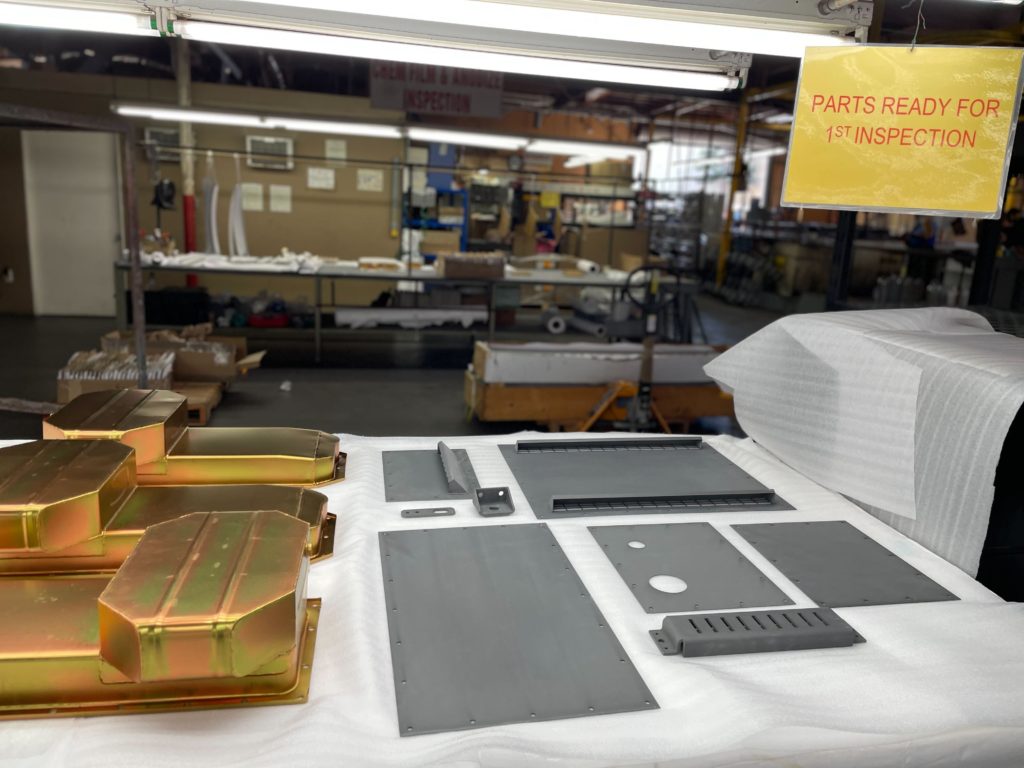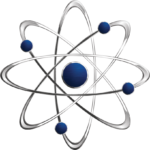Passivation
resistant steels.
Passivation Overview
Passivation processes remove free iron, foreign substances from the stainless steel surfaces. The controlled Passivation process utilized acid solutions which dissolves entrapped metals, substances and contaminants byproduct of machining or fabrication processes. The properly passivated stainless steel surfaces are relieved or freed from chromium oxides enhancing corrosion resistance inherent to stainless steels.
Types of Nitric Acid passivation we offer
Passivation removes free iron and surface contaminants. The surface part is chemically cleaned to remove grease, dirt and treated by a mild acid. The treatment enhances the corrosion resistance of stainless steel.
Type 2 -Solution can be used for parts made of high carbon/high chromium grades or relatively large amounts if sulfur for parts made of high carbon/high chromium grades (440 series), straight chromium grades with 12-14 % chromium (martensitic 400 series), or for corrosion-resistant steels containing relatively large amounts percent) of sulfur or selenium (for example 303.303Se, 416, 416Se, 430F, 430Se and precipitation harden steels).
Type 6 – Solution can be used to process austenitic 200 and 300 series chromium nickel and chromium grades with 17% chromium or greater (with exception of 440 series) corrosion-resistant steels.
Ultimately, passivation is a process that helps prevent corrosion and pitting on the surface of stainless steel. The passivation process applies a thin transparent passive chemically inert film to stainless steel that reduces the reactivity of the metal. This film deters corrosion, oxidation, and mild chemical attack.
Because corrosion and contamination can strip stainless steel of the metal’s key advantages such as performance, cleanliness, and appearance; passivation is important as a process to maintain the metal’s overall performance integrity.
It is popular in a number of industries including:
- Aerospace and Military application (it increases quality of the steel which in turn helps with accuracy)
- Medical Equipment (helps in the sterilization process)
Metal Chem Inc. adheres to the following standards and specifications for passivation of corrosion resistant steels:
AMS-QQ-P-35 The passivation treatments provided by this specification are intended to improve the corrosion resistance of parts made from austenitic, ferritic and martensitic corrosion-resistant steels of the 200, 300 and 400 series and precipitation hardened corrosion-resistant steels. High carbon, high chromium martensitic 440C grades which are selected for high hardness and resistance may be exempt from passivation treatments at the discretion of the procuring activity.
AMS 2700 This specification covers the requirements for a process to assure removal of free iron or other less noble contaminants from the surfaces of corrosion resistant steel parts.

nitric acid passivation
Quality System
With a facility that boasts more than 15,000 square feet, our headquarters includes an in-house laboratory and state-of-the-art technology that’s unparalleled in the metal application industry. You can feel confident that your project is in the hands of experts – our team of control managers has decades of experience in the science of metal finishing, metal plating, and chemistry.
Quality Criteria for Solution Analysis and Testing
- B10 – Adhesion Testing
- B14 – Conductivity Testing
- B16 – Coating Thickness Measurement.
- B21 – Paint Color and Gloss Testing
- B22 – Solvent Resistance Testing
- B23 – Other Testing In Support of AC7108
passivation Quality Control
From Start To Finish
1
Metal Prep + Masking
At Metal Chem, we take the necessary steps to prep your metal prior to the nitric acid passivation application. If masking is required, our team includes dedicated experts that handle the masking in-house.
2
Metal Application
Metal Chem Inc. maintains the appropriate process controls for our chemical conversion and electroplating processes which require surface cleaning, titration, coating weights, pH, and TDS verification.
3
QA Inspection
Metal Chem uses sophisticated process controls and analysis to ensure all of our final products meet the standards of our accreditations and mil-spec testing validation requirements.

Who We Help
Aerospace & Military Metal Applications Approvals
Since 1991, Metal Chem Inc. has become one of the premiere metal plating and finishing companies in the country. Our NADCAP accreditation has allowed us to proudly fulfill the metal application needs of top technology pioneers in the aerospace, military and naval industries. As an industry leader in spec plating and metal finishing, our team has decades of experience handling complex projects that require a sophisticated level of detail.
Industries We Serve
You ask, we answer
Find answers to the most frequently asked questions about the passivation process.
To ensure the formation of a proper oxide coating, the surface of stainless-steel substrates can be treated with chemicals to remove contaminants or impurities. This removal and the resulting oxide growth process is called passivation.
Metal Chem Inc. adheres to the following standards and specifications for passivation of corrosion resistant steels:
AMS-QQ-P-35 The passivation treatments provided by this specification are intended to improve the corrosion resistance of parts made from austenitic, ferritic and martensitic corrosion-resistant steels of the 200, 300 and 400 series and precipitation hardened corrosion-resistant steels. High carbon, high chromium martensitic 440C grades which are selected for high hardness and resistance may be exempt from passivation treatments at the discretion of the procuring activity.
AMS 2700 This specification covers the requirements for a process to assure removal of free iron or other less noble contaminants from the surfaces of corrosion resistant steel parts.
Passivation can involve the handling of toxic chemicals and must only be undertaken by metal finishing companies with the ability to handle the chemicals correctly and the ability to work with various regulatory agencies to ensure compliance with environmental and workplace safety laws.
In the case of “common” steel, stainless steel passivation is a non-electrolytic process typically using nitric acid which removes free iron from the surface and forms an inert, protective oxide layer that in turn renders the steel more rust-resistant due to lack of iron to react with the atmosphere.
Get in Touch
Phone
(818) 727-9951
info@metalcheminc.com
Address
21514 Nordhoff Street
Chatsworth, CA 91311

